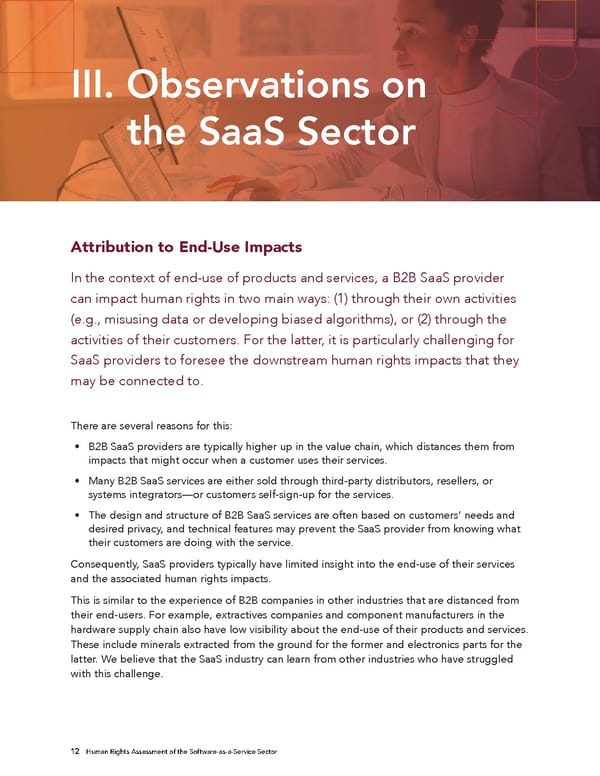III. Observations on the SaaS Sector Attribution to End-Use Impacts In the context of end-use of products and services, a B2B SaaS provider can impact human rights in two main ways: (1) through their own activities (e.g., misusing data or developing biased algorithms), or (2) through the activities of their customers. For the latter, it is particularly challenging for SaaS providers to foresee the downstream human rights impacts that they may be connected to. There are several reasons for this: • B2B SaaS providers are typically higher up in the value chain, which distances them from impacts that might occur when a customer uses their services. • Many B2B SaaS services are either sold through third-party distributors, resellers, or systems integrators—or customers self-sign-up for the services. • The design and structure of B2B SaaS services are often based on customers’ needs and desired privacy, and technical features may prevent the SaaS provider from knowing what their customers are doing with the service. Consequently, SaaS providers typically have limited insight into the end-use of their services and the associated human rights impacts. This is similar to the experience of B2B companies in other industries that are distanced from their end-users. For example, extractives companies and component manufacturers in the hardware supply chain also have low visibility about the end-use of their products and services. These include minerals extracted from the ground for the former and electronics parts for the latter. We believe that the SaaS industry can learn from other industries who have struggled with this challenge. 12 Human Rights Assessment of the Software-as-a-Service Sector
 Human Rights Assessment of the Software-as-a-Service Sector Page 12 Page 14
Human Rights Assessment of the Software-as-a-Service Sector Page 12 Page 14